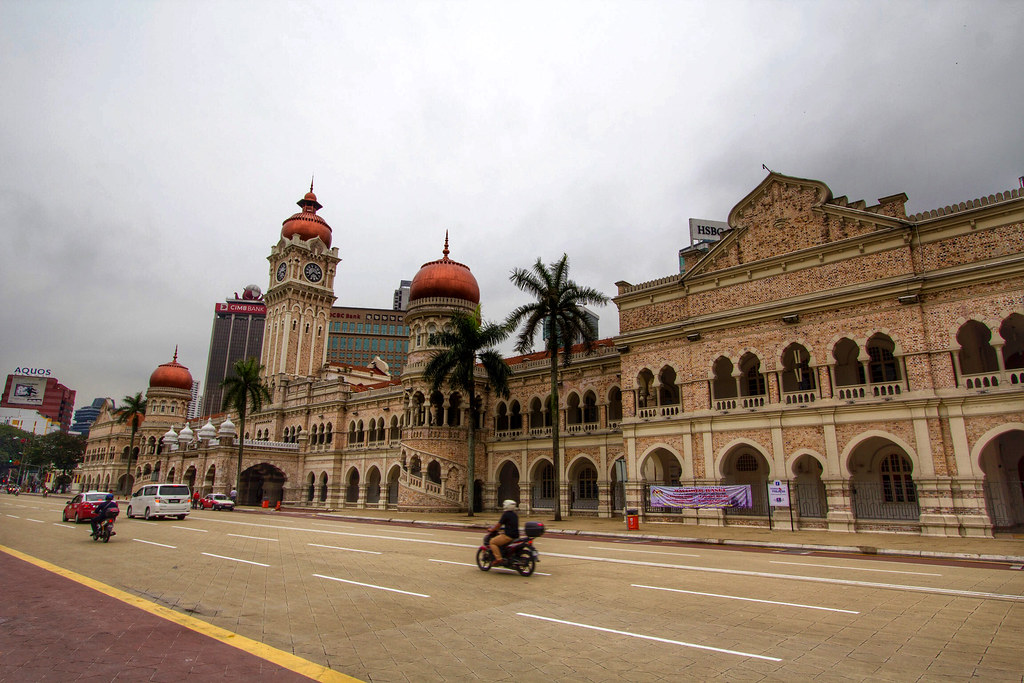From the previous post, I have written about the vernacular Malaysian architecture. Here, I will start writing about influences from foreign countries and the buildings which built with foreign elements.
Moorish in vernacular Malaysian architecture. Just for your information, commercial buildings with foreign elements which is Moorish architecture are showed and the existence of these buildings were built decades ago. Some of these buildings are still in used or it had become a tourist area that we have it located in Merdeka Square, Kuala Lumpur.
So, what is Moorish style? Moorish architecture is a variation of Islamic architecture. There are many motifs, or repeated patterns, in Moorish architecture. different styles of arches, calligraphy, vegetative design, and decorative tiles. (Society, 2012)
Here are the examples of Moorish style in vernacular Malaysian architecture:
Sultan Abdul Samad Building, Kuala Lumpur
A little history about Sultan Abdul Samad Building:
The Moorish-style (defined as Islamic Architecture) of historical building located right in front of Merdeka Square. It was designed by an architect named AC Norman during 1897. It is used to house the superior courts of Malaysia: the Federal Court of Malaysia, the Court of Appeals and the High Court of Malaya, before they moved to Putrajaya. (Direct, 2016)
Malayan Railway
Administration Building, Kuala Lumpur
Ministry of
Information, Communications and Culture of Malaysia, Kuala Lumpur
National Textiles Museum,
Kuala Lumpur
I wonder you realize that the similarity of these buildings are repeated arches and numerous of opened windows design throughout the buildings. Not only that, there are domes design too. Based on these elements which already fulfill with the definition of Moorish styles of architecture.
From my point of view, the Moorish architecture becomes a trademark in Merdeka Square which can easily be recognised. The influence of Moorish styles are from Middle East which is also an Islamic foreign country. The similarity of culture and religion which creates the impact of inspiration by the foreign country and so there is the Moorish style existed in vernacular Malaysian architecture.
From my point of view, the Moorish architecture becomes a trademark in Merdeka Square which can easily be recognised. The influence of Moorish styles are from Middle East which is also an Islamic foreign country. The similarity of culture and religion which creates the impact of inspiration by the foreign country and so there is the Moorish style existed in vernacular Malaysian architecture.
More about Islamic and Malay architecture is coming up on the next post!
Stay tuned!
Stay tuned!
Reference:
Direct, A.W. (2016) Sultan Abdul Samad building in Kuala Lumpur - Kuala Lumpur attractions. Available at: http://www.kuala-lumpur.ws/attractions/sultan-abdul-samad-building.htm#promo (Accessed: 29 June 2016).
National Geographic Society, n.d.
Moorish Architecture. Retrieved from http://nationalgeographic.org/media/moorish-art/
Society, N.G. (2012) Moorish architecture. Available at: http://nationalgeographic.org/media/moorish-art/ (Accessed: 29 June 2016).
Society, N.G. (2012) Moorish architecture. Available at: http://nationalgeographic.org/media/moorish-art/ (Accessed: 29 June 2016).




No comments:
Post a Comment